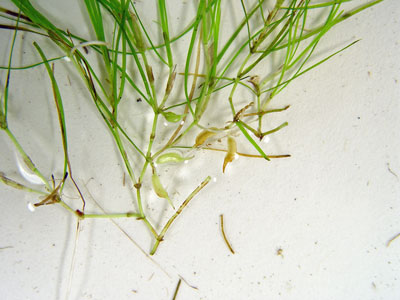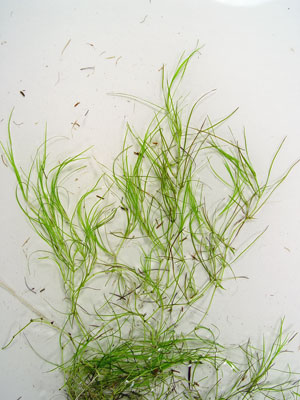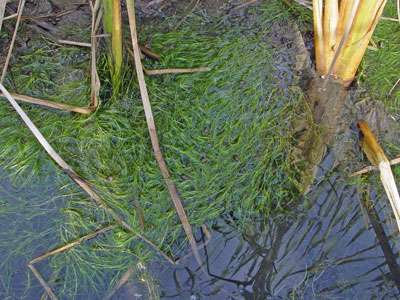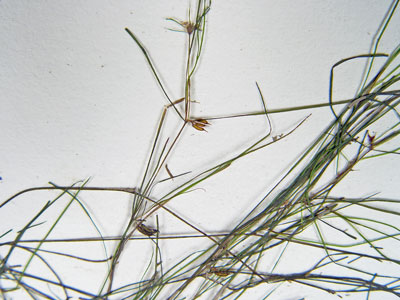DACF Home → Bureaus & Programs → Maine Natural Areas Program → Communities, Plants, and Animals → Rare Plants → Zannichellia palustris

Zannichellia palustris L.
Horned Pondweed
- State Rank: S2
- Global Rank: G5
- State Status: Special Concern
Habitat: Fresh, brackish, or alkaline waters and stream edges. [Tidal wetland (non-forested, wetland)]
Range: Newfoundland to Alaska, south throughout United States to Mexico. Also South America, Africa, Eurasia.

Aids to Identification: Horned pondweed is a submersed aquatic with slender, thread-like branches arising from a fragile rhizome. It can be distinguished from other pondweeds by its linear, opposite leaves and its distinctive fruits borne in the axils. The fruits are short, flattened, somewhat toothed along one edge and have a distinct beak (1-2 mm long) on the tip. In flower, the carpels have a distinctive, funnel-shaped stigma.
Ecological characteristics: Along our coast, horned pondweed grows on the mud at the lowest level of the intertidal zone where it is exposed only at full low tide and is subjected to higher salinities than most other estuarine species. It usually grows singly and is rare even within its few stations. A pH range of 6.5-7.2 and chloride range of 185-1200 mg/l has been reported for water where Zannichellia is found in New England.

Phenology: Fruits can be found July - October.
Family: Potamogetonaceae
Synonyms: Zannichellia palustris L. var. major (Hartman) Koch.
Known Distribution in Maine: This rare plant has been documented from a total of 15 town(s) in the following county(ies): Cumberland, Hancock, Knox, Lincoln, Penobscot, Sagadahoc, Waldo, York.

Reason(s) for rarity: Habitat is naturally scarce and in some cases has been altered by human activities. Possibly overlooked.
Conservation considerations: Prevent degradation of marsh and estuary habitat from adjacent land uses.